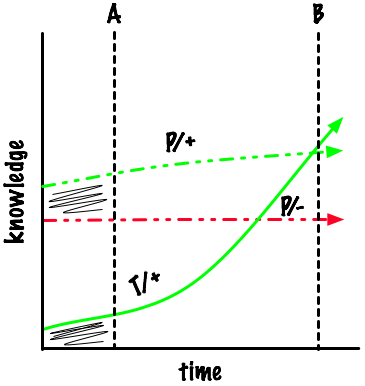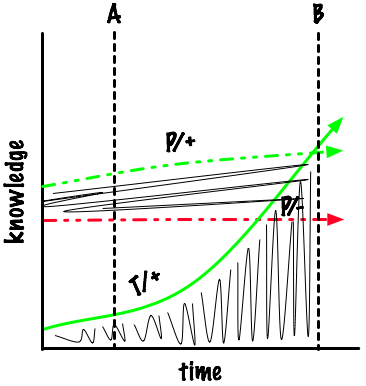For service, give me a rude but efficient New Englander over a friendly but slow Southerner any day. I’ve been made fun of for shutting the dishwasher door with my foot while simultaneously stretching the other way to grab something out of a cupboard, but it just makes sense to me to do things in parallel unless they have to be serial. I fume when behind people who wait until the cashier tells them the total before beginning to fumble for their money. So I ought to be all for one of the defining characteristics of Lean: driving out waste.
And I am, but… it’s a dangerous tool when used as an excuse by the inhumane. For an illustration, go to my favorite passage from my favorite Shakespeare play, King Lear. Lear has given over his power to two of his daughters, Goneril and Regan. He and a hundred rowdy knights are staying with Goneril, who wants him to dismiss half of them. He pitches a fit:
… thou are a boil,
A plague-sore, an embossed carbuncle,
In my corrupted blood. But I’ll not chide thee …
I can be patient; I can stay with Regan,
I and my hundred knights.
But Regan agrees with her sister:
… what, fifty followers?
Is it not well? What should you need of more?
… and then goes a step further:
… I entreat you
To bring but five and twenty: to no more
Will I give place or notice.
Lear is shocked, repudiates her, and decides to stay with Goneril, saying to her:
… I’ll go with thee:
Thy fifty yet doth double five and twenty,
And thou art twice her love.
But Goneril is remorseless:
… Hear me, my lord;
What need you five and twenty, ten, or five,
To follow in a house where twice so many
Have a command to tend you?
And, in what I consider one of the most devastating short lines ever written, Regan adds:
What need one?
Then comes Lear’s great ineffectual cry and descent into madness:
O reason not the need! Our basest beggars
Are in the poorest thing superfluous.
Allow not nature more than nature needs,
Man’s life is as cheap as beast’s. Thou art a lady:
If only to go warm were gorgeous,
Why, nature needs not what thou gorgeous wear’st,
Which scarcely keeps thee warm. […]
… touch me with noble anger,
And let not women’s weapons, water drops,
Stain my man’s cheeks. No, you unnatural hags!
I will have such revenges on you both
That all the world shall–I will do such things–
What they are, yet I know not; but they shall be
The terrors of the earth. You think I’ll weep.
No, I’ll not weep.
Regan and Goneril were driving out waste. Those knights really were a rowdy, drunken gang of good-for-nothings. But waste was just an excuse. R&G really cared about personal power, not waste. And so will many people marching behind the Lean “banner with a strange device: muda!”
Now, as Jonathan Kohl would point out, many people marching behind the Agile banner do the same: they use Agile as another club with which to beat people. I’m less worried about Agile, though, because its base rhetoric is more explicitly humanist. Lean is more likely to be an attractive nuisance because the idea of driving out waste appeals to executives who find it less work to remove waste than to convert it into value—executives who get license to act sociopathic because they have a fiduciary duty to treat business as a machine for maximizing shareholder value, externalities be damned. I worry about Lean in a business culture where we are trained out of empathy for Lear, damned fool though he surely is.


